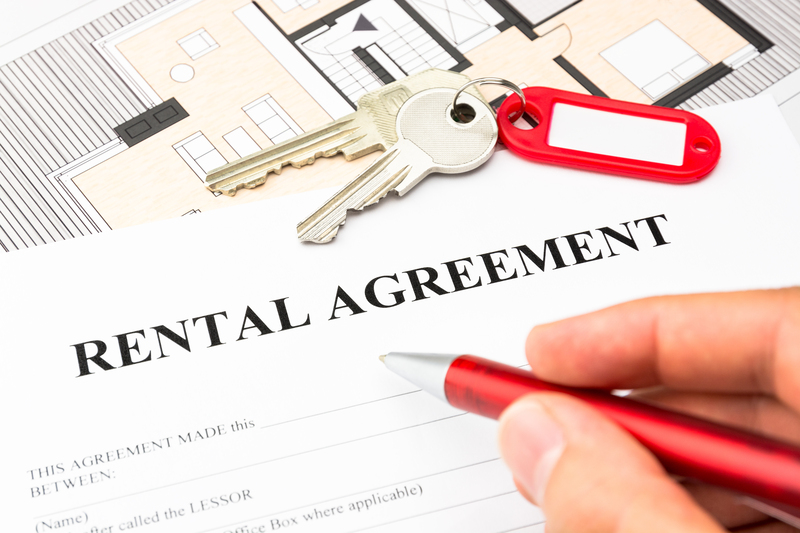City Relocation: Top Packing Tips
Posted on 16/03/2025
City Relocation: Top Packing Tips
Relocating to a new city can be an exhilarating yet daunting experience. While the prospect of starting afresh in a new environment brings excitement, the logistical challenges of moving can be overwhelming. Among these, packing is perhaps the most critical task. Effective packing can ensure a smooth transition, safeguarding your belongings and reducing the stress associated with relocation. In this comprehensive article, we share top packing tips to make your city relocation as seamless as possible.
1. Start Early
One of the biggest mistakes people make is waiting until the last minute to start packing. Begin the process at least two months before your moving date. This timeframe allows you to sort through your belongings, decide what to keep, donate, or discard, and pack systematically without feeling rushed.

2. Declutter Your Belongings
Before you even think about packing, declutter. Moving is an excellent opportunity to minimize your possessions. Go through each room and identify items you no longer need or use. Donate usable items to charity, recycle when possible, and responsibly dispose of the rest. Decluttering not only reduces the number of items you need to pack but also lowers moving costs.
3. Gather Necessary Packing Supplies
Ensure you have all the packing supplies you need before you start:
- Sturdy boxes of various sizes
- Bubble wrap
- Packaging tape
- Marker pens
- Packaging paper or old newspapers
- Scissors or a box cutter
- Labels
Having these supplies on hand will make the packing process smoother and more efficient.
4. Use the Right Box for the Right Item
Choosing the right box for each item is crucial. For heavy items like books, use smaller boxes to prevent them from becoming too heavy to carry. Larger boxes are best for lighter items like linens and pillows. Make sure all boxes are sturdy and in good condition to protect your belongings during transit.
5. Pack Room by Room
Packing room by room helps to keep your move organized. It also makes unpacking simpler as you can easily find items by room in your new home. Label each box with the room it belongs to and a brief description of its contents. For example, "Kitchen: Pots and Pans" or "Bedroom: Bedding and Pillows".
6. Protect Fragile Items
Fragile items require special care. Wrap each item individually in bubble wrap or packing paper and use extra stuffing to fill any gaps in the box. Clearly label boxes containing fragile items with "FRAGILE" and "HANDLE WITH CARE" and ensure these boxes are not placed under heavier items during loading.
7. Use Clothes as Packing Material
A smart way to save on packing supplies and maximize space is to use your clothes to wrap and cushion other items. T-shirts can be used to wrap breakables, while socks can be tucked into shoes to help them maintain their shape.
8. Keep Important Documents and Valuables Separate
Pack important documents, such as birth certificates, passports, medical records, and financial documents, separately and keep them with you during the move. Valuables such as jewelry should also be packed separately. It's often advisable to transport these personally to ensure they are not lost or damaged.
9. Create an Essentials Box
An essentials box contains items you'll need immediately upon arrival in your new home. This can include toiletries, a change of clothes, essential kitchen items, and basic tools. Pack this box last so it's easily accessible when you arrive at your new location.
10. Label Everything Clearly
Clear labeling is essential for easy unpacking. Use a marker pen to write on each box or use pre-printed labels. Include not only the room and contents but also any special instructions, such as "This Side Up" or "Fragile". Color-coding boxes by room can also be a helpful strategy.
11. Disassemble Furniture
Disassemble large furniture pieces where possible. This makes them easier to transport and less likely to be damaged. Keep screws, bolts, and other small parts together in labeled plastic bags and tape these bags to the corresponding furniture pieces.
12. Take Photos of Electronic Setups
Before you disconnect electronics, take photos of the setup. This will make reassembly in your new home much more manageable. Label cords and cables, and pack them together with the corresponding devices to prevent any mix-ups.
13. Use Plastic Wrap for Spillable Items
Wrap bottles containing liquids, such as shampoos and cleaning supplies, in plastic wrap before packing them. This extra layer of protection helps prevent leaks and spills that could damage other items in the box.
14. Arrange for Professional Movers
If your budget allows, hiring professional movers can significantly reduce the stress of relocation. Professionals have the expertise and equipment to handle your belongings safely and efficiently. Get quotes from multiple companies and check their reviews to ensure you're hiring a reputable service.
15. Plan the Moving Day
On moving day, make sure you have a plan in place. Confirm timings with your movers, have refreshments available, and keep a copy of the moving inventory on hand. Ensure pets and small children are safe and supervised, as moving day can be chaotic and stressful for them.
16. Take Care of Utilities and Services
In the midst of packing and moving, it's easy to forget about utilities and services. Make a checklist and ensure that you disconnect services at your old home and set them up at your new one. This includes electricity, water, gas, internet, and any subscription services.
17. Conduct a Final Walkthrough
Before leaving your old home, conduct a thorough walkthrough to ensure nothing is left behind. Double-check cabinets, closets, and outdoor areas. This is also your last chance to ensure the home is clean and ready for the next occupants.
18. Unpack Strategically
Once you arrive at your new home, unpack strategically. Begin with the essentials box and then move on to items you'll need immediately, such as kitchen utensils and clothing. Setting up your bed first can be a good idea, so you have a place to rest after a long day of moving.

19. Enjoy Your New Home
Finally, take some time to enjoy your new home. Explore the neighborhood, meet your new neighbors, and give yourself time to settle in. Moving can be stressful, but it also marks a new and exciting chapter in your life.
Conclusion
City relocation can be a challenging process, but with the right planning and packing strategies, you can mitigate much of the stress. Start early, stay organized, and use these packing tips to ensure your move goes as smoothly as possible. With careful preparation, you'll be able to enjoy the thrill of your new city without the hassle of a chaotic move. Happy relocating!



